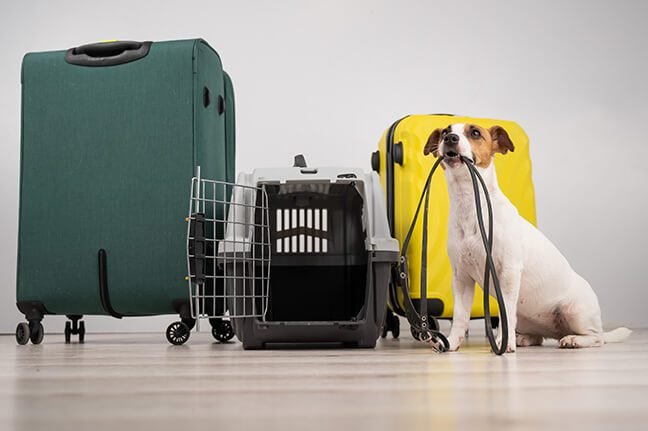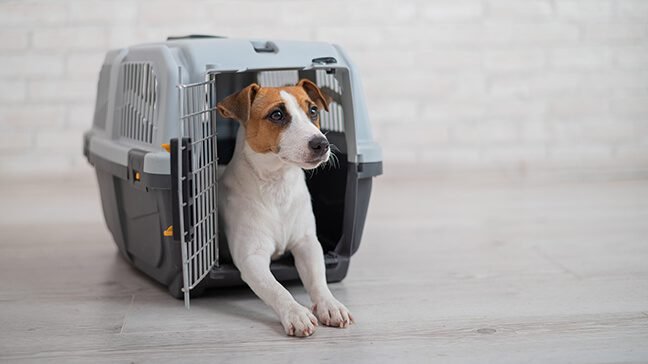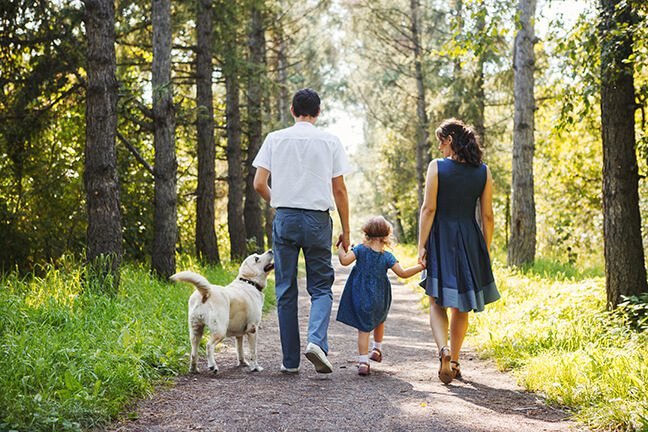The USA has a reputation of being one of the most animal-friendly jurisdictions in the world. It is natural that many immigrants to the country would decide to bring their companion dogs along when relocating to their new home. Yet bringing a dog into the US can be a complicated process. And the COVID-19 restrictions imposed by airlines and governments of different countries can potentially make it an even more stressful experience.
In this article, we will share some important tips of importing dogs into the USA, including all the required procedures, documentation for pet customs, preparation work, things to look out for when boarding your dogs onto the flight, as well as how to help your furry friends settle down at their new home.
Keeping in mind that there may be additional requirements based on your originating country. Always check with your local authorities about the latest export and departure requirements. For importing in the U.S., CDC (Centers of Disease Control of the U.S.) and USDA (U.S. Department of Agriculture) are the sites you can refer to about the latest news and requirements.

Preparation – How to Import a Dog to the USA
Plan Ahead
Give yourself ample time as there is plenty of homework and research you need to do before departing. Start preparing at least 2 tor 3 months ahead of the big day. As of the writing of this article, different countries and airlines are still implementing new restrictions and requirements because of COVID-19. You need to stay alert of the most updated rules and measures to avoid any last-minute hiccup and surprise.
CDC & USDA Rules, Laws & Regulations
You can’t go wrong getting yourself familiarized with the rules of the CDC (Centers for Diseases Control and Prevention) and USDA on U.S.A. pet import requirements. What breed is your dog, its medical condition, travel history, which country are you moving from – all these will help determine the required information and procedures for bringing your dog into the USA. Read this step-by-step guide on how to bring a dog to U.S.A.
What is Required of your Dogs
The following is a list of required documents and information you need to submit in order to bring dogs into the U.S.A . They may vary from case to case so check the relevant laws & regulations thoroughly to find out what applies to yours. Note that English versions of these documents are required regardless of which countries you are coming from:
- Health Certificate for dogs – issued by a licensed vet stating that your dog is healthy and fit to fly.
- Travel History – recent 6 months if any.
- Rabies Vaccination Certificate – recent 2 years.
- Proof of Screwworm Examination – only if you are originated in screwworm-infected country
- Microchip – 15-digit ISO standard recommended.
- Other documents that may be required by your local exporting country and airline.
Choosing an Airline
Depending on the pet travel policies of the airline you choose, your dogs may be able to fly with you in the cabin as a carry-on, as accompanied baggage, or as cargo. Other factors include the size and weight of your dog, availability of the flight, temperature restriction etc.
Many international airlines like Delta Airlines, United Airlines put their pet travelling policies on the websites. Some US-based airlines have suspended their pet travel programs during the pandemic but most have resumed their services. Check with the airlines for their most recent guidelines.

Dog Crate
The crate should be large enough for your dog to stand up and turn around. It should be approved by the International Air Transport Association (IATA). Here’s more information on the crate specification. To make sure your dog is ready for their trip, get the travel crate as far in advance as possible – ideally a month before your dog get on the plane. Your dog needs time to familiarize itself with the crate and this will be its first step to get through the stressful trip. Watch this video for tips on how to acclimate your dog with its crate.
Quarantine
No quarantine is required for dogs in most of the US states. The exception being that if the dog is from or has travelled to a high-risk country over the past 6 months. Hawaii and Guam are two destinations that have quarantine requirements for imported dogs. Refer to CDC guidelines for specific requirement in these cases.
Pet Mover
If you decide to engage a pet relocation agency, be sure to do your research to make sure it is reputable and reliable. It normally costs around US$1,000 to $5,000 to hire the agency to ship one dog from another country to the U.S. Costs varies depending on the travel distance, country of origination, airlines, pet sizes, medical and vaccination services, export and import documentations and clearance, etc. You may find the list below of estimated items useful:
- Airlines
- Shipping Crate
- Vet Medical Visit and Vaccination
- Export & Import Documentation
- Transportation, Parking
- Tax
- Other Services – including coordination and liaison with related government departments, pet customs, airlines, vet, logistics companies, etc.
IPATA and PetRelocation are two renowned and professional pet relocation companies that operate globally. You can benchmark their services and prices against other service providers, as well as your own budget and preferences. Request estimates from at least a few shippers for comparison.
Some companies may provide prospective customers with a lower quote to begin with, but will add on more charges subsequently. So be sure to ask for clarification on this before committing.

Moving Day
Before the Flight
On the day of the move, allow your dog to take as many breaks for potty and walks as possible. If your dog is going to be on a long haul, we recommend scheduling a mid-night flight, if possible. That way, they will be tired from the previous day’s activity and hopefully will rest more on the flight. Make sure you bring some dog pads for potty in and out of the airports.
During Travel
If your dog travels in cargo, airline staff sometimes takes the animal to a dog area where they are walked, fed, given water and potty during transit. Airline like Lufthansa Cargo offers this service. You can check with your airline if they would do the same. If your dog is flying in cabin, you can check with the cabin crew if you can let your dog stretch its legs during layover.
Here are more instructions on pet caring and handling during travels you may find useful.
Keep Travel Documents in Order and Handy
You are recommended to keep hard- and soft-copies of all information of yourself and your dog with you. This will be extremely helpful to handle inquiries from vets, airlines, pet customs, pet movers, and even pet groomers in the future. Missing or incomplete documents could mean extensive delays. In the worst case scenario, your dog may be denied to board the flight or enter the U.S..

After You Have Immigrated to the U.S. with Your Dog
Vet Appointment & Microchip Registration
Find a reliable vet near your new home and arrange the first appointment for your dogs as soon as you settle down. This is to prepare for any medical needs after your dog has traveled, and for any emergency needs in the future.
Your dog should always be microchipped and registered for a 24/7 lost & found support. You do not want to have to go through any trauma of your dog going missing in a new country after the lengthy relocation process. 24petwatch and AKC Reunite provides simple microchip registration and reunite support in case of an accident happening in the U.S.
Familiar Items Help
Whether you live in high-rise, low-rise apartments, condos or single-family houses, your dogs need time to adapt to a totally new environment that will become their new home. Place familiar items around, like beds, throws, toys. This will help them feel like they are nested and safe.
Exploring the Neighborhood
Dogs are curious animal, especially to any new environment. Do not push your dog to socialize with strangers or other dogs too early. It can be intimidating for dogs when they’re in unfamiliar territory. Instead, walk them multiple times every day and let them explore the neighborhood with their nose and all. If you are living in a big city in the U.S., this will help ensure that it gets plenty of exercise. Remember to keep them leashed and be mindful of surroundings and potential triggers for your dogs – strangers, animal, noise, cars, etc.
Beware of “Wild” Neighbors
If you are moving to the suburbs, watch out for wild animals that your dog has never been exposed to back in your old home. Foxes, raccoons, skunk, etc., are wild animals that can be found in many neighborhoods in the USA and they may carry diseases like rabies, Leptospirosis which are harmful to dogs and human. Keep your dog safe and away from wild animals.

Welcome to Your New Home
If you follow the tips above, you should be able to bring your furry friends into the USA without any major hassle. And now that they are physically settled down, it’s time to take the next step and work on getting things set up in a new permanent home not just for your loved ones, but also for yourself as a dog owner.
For example, what are the best ways to socialize your dogs in a new country?
What do you need to look out for when getting things like pet insurance and dog suppliers?
Just like moving over, you will need to do much homework but it will be worth it when you see them running around and playing with their new friends!

